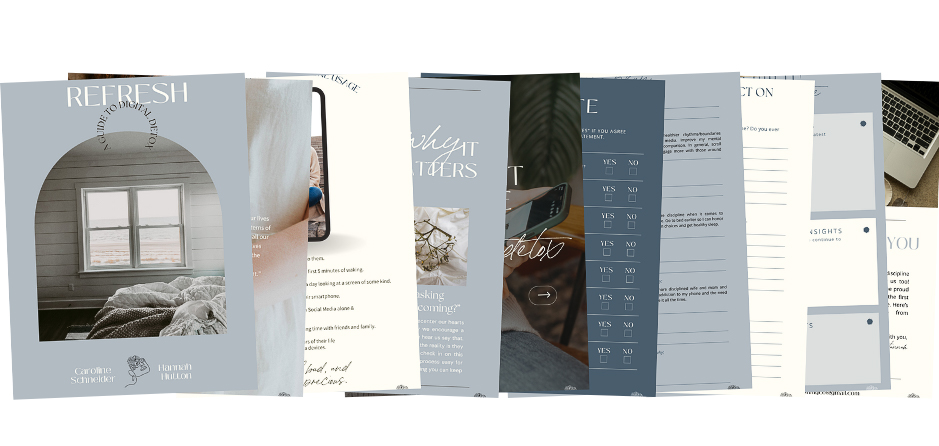Our Digital Detox Experience
April 22, 2024
BY: CAROLINE SCHNEIDER & HANNAH HUTTON
We want you to know we come into this blog with a lot of empathy. We don’t want to be another voice telling you what to do when it comes to media and screens, but rather we want to be friends confessing that figuring this out is hard. We often don’t know if we’re using our digital devices well and question ourselves. If you have similar feelings, you’re in the right place. Welcome to our thoughts and journey of figuring out our own digital philosophy. We hope this is a gentle and compassionate reminder for us all to evaluate this hard topic and keep learning together.
Caroline: I came across an app earlier this year that stated the average American will spend 17 years of their life (time combined) looking down at a screen. Gut punch. I also read a study around the same time that showed the correlation between devices and “happiness” that concluded “devices have made our lives easier, but they have not made our lives happier.” I really sat with both of these, thinking about what they meant for me. I started evaluating and assessing my screen use and asking myself these questions:
- Do I ever have time away from my phone?
- Do I feel this need to carry my phone with me from room to room?
- Do I reach for my phone first thing in the morning? And do I scroll on it before falling asleep? What voices are the loudest in my life?
- Do I fear I’m going to miss a text or call if I part from my phone for more than 5 minutes?
- Do I think everything has to be documented and/or shared?
- How often am I picking my phone up a day (most phones have the ability to show you this in the settings)?
- How often am I engaging with my husband, my kid, or a friend with my phone nowhere in sight? Am I easily distracted?
- Am I choosing my phone instead of my rhythms that I know help me thrive and are important to me?
To be honest with you, I did not like my answers. I was so sad and certainly didn’t feel happier because of them. So I decided I wanted something to shift– I would dive into a digital reset. I made a plan and invited my husband and my friend Hannah’s family to do it with me as sort of an experiment. Naturally, our kids would be included as well which we’ll speak to what we learned for kids and screens in part two of this blog coming later.
Hannah: As a creative, I love the tool that technology can be. I love the platforms it creates to share, admire, and engage. I love the ways it can improve daily tasks. And at the same time, I have become painfully aware of the damage it can do to my consistency in healthy rhythms, my attention span, quality time, and more. Technology in and of itself is not bad, I believe that. I also believe that it is wildly important for me to have a game plan, so to speak, as to how I interact with it. I think technology is here to stay, which makes it even more important for me to engage with it in a healthy way.
When Caroline reached out about joining her in this reset, I felt something deep within me scream “yes”. I recognized that I needed a better game plan, because the one I had been playing by wasn’t working well. My biggest “why” in doing this was one question I like to ask myself, “Who am I becoming?”. There are aspects of my daily habits with technology that I didn’t love, and I wanted to work towards changing those habits. In the book Habits of the Household, the author says, “We become our habits, and our kids become us. Which means who our children are becoming is tightly connected to who we are becoming—personally and communally.” This quote is also a big reason behind this drive to engage healthily with technology for me.
My biggest pain point is social media. As a photographer and someone who is always up to some creative endeavor, I find such joy in seeing other people create and share as well. However, I could feel the urge to scroll creep up in moments where it was unnecessary. It became a distraction for me. A lot of my close friends live out of state, and we keep up through texting during the day. While it is a beautiful gift to stay connected even from afar, I found myself carrying my phone from room to room for no urgent reason. Checking my phone first thing in the morning, before bed, etc.. Many undesirable habits just kept forming. I was really excited and hungry for this digital reset.
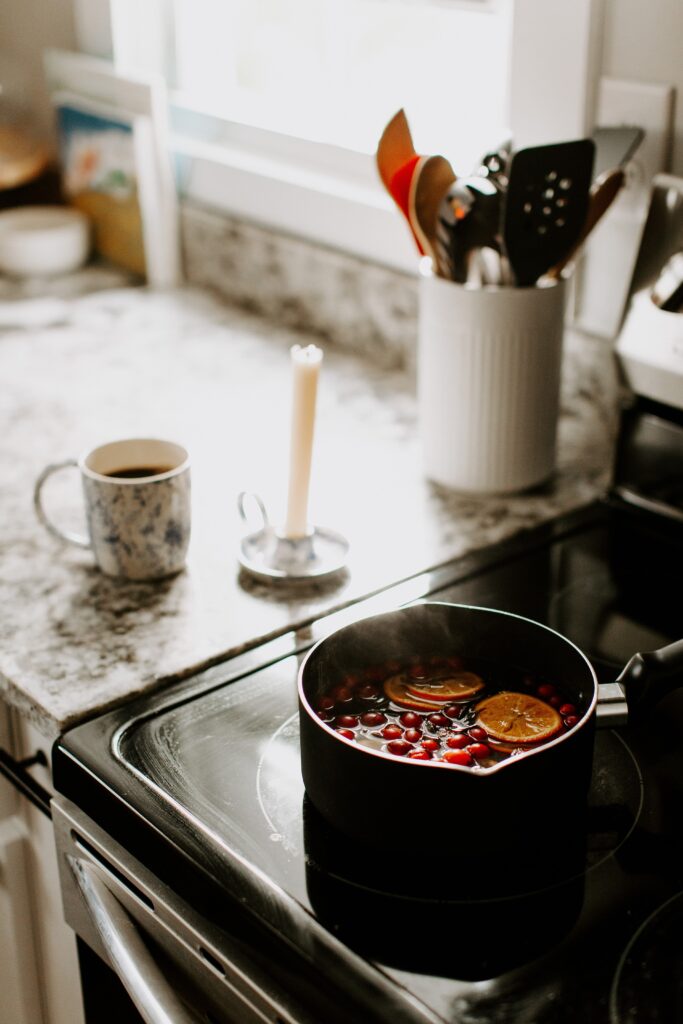
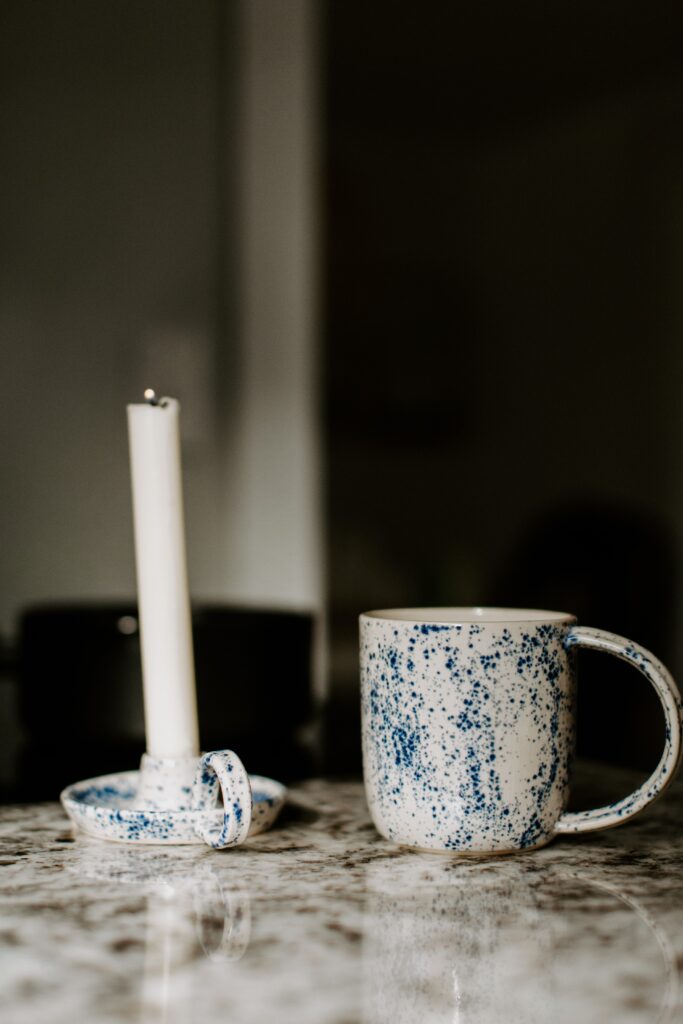
Caroline: Screens and media aren’t bad. Please hear me say that. They are helpful– they do advance our world. And the reality is they aren’t going anywhere, so this experiment, if you will, was my way of learning to embrace them within a healthy way for me and my family. I knew my phone and TVs weren’t the problem, but rather how I was using them. I knew I wanted to learn to use them well. There is no hard and fast rule on how to do this, and boundaries and limits may look different for each person. It’s certainly not black and white, so the hope is that my experience will be an encouragement to you to do your own digital reset. Read to the end because we released a new guide to help you do this for yourself!
Caroline & Hannah: So what does a digital reset (or detox) look like? For us, it was completely removing certain aspects of devices that really played into our answers to the questions Caroline mentioned above. Our plan was to remove those for 30 days, then establish a healthier boundary with each of them based on what we learned through the experience. Here is what we removed:
- Took all social media off my phone (for me it was Instagram and Facebook)
- Took all social media off my phone and did not get on, even on my laptop
- Removed all TVs in our home (we have two that got placed in closets upstairs)
- Our TV is mounted to the wall, so we just tucked the remote away and didn’t turn it on
- Used the app Opal to set time blocks on certain apps during certain time windows (I didn’t have social media at all during these 30 days so this included things like shopping apps that lower my productivity– think Amazon, Target, etc)
- I also used the Opal app to track where I spent my time to give me a good perspective as to when I grab my phone the most
- Wrote down a list of times I wanted to be completely away from my phone… for me it was in the morning between 6-8am, the 3 hours in between work and Darcy’s bedtime, any special time planned for Nelson and I to spend one on one intentional time, and pretty much all day on Sundays once we are home from church
- Set goals for other habits I wanted to form to fill my time when I would normally reach for my phone: reading, baking, etc.
- No watching any show or movies during the digital detox
- No shows or movies
- Not checking my phone before 8:30am
- Use the time I would normally fill with watching and scrolling with other hobbies I love such as journaling, reading, writing letters, getting outside, sourdough making (a new endeavor–yes, I’ve joined that world haha), etc
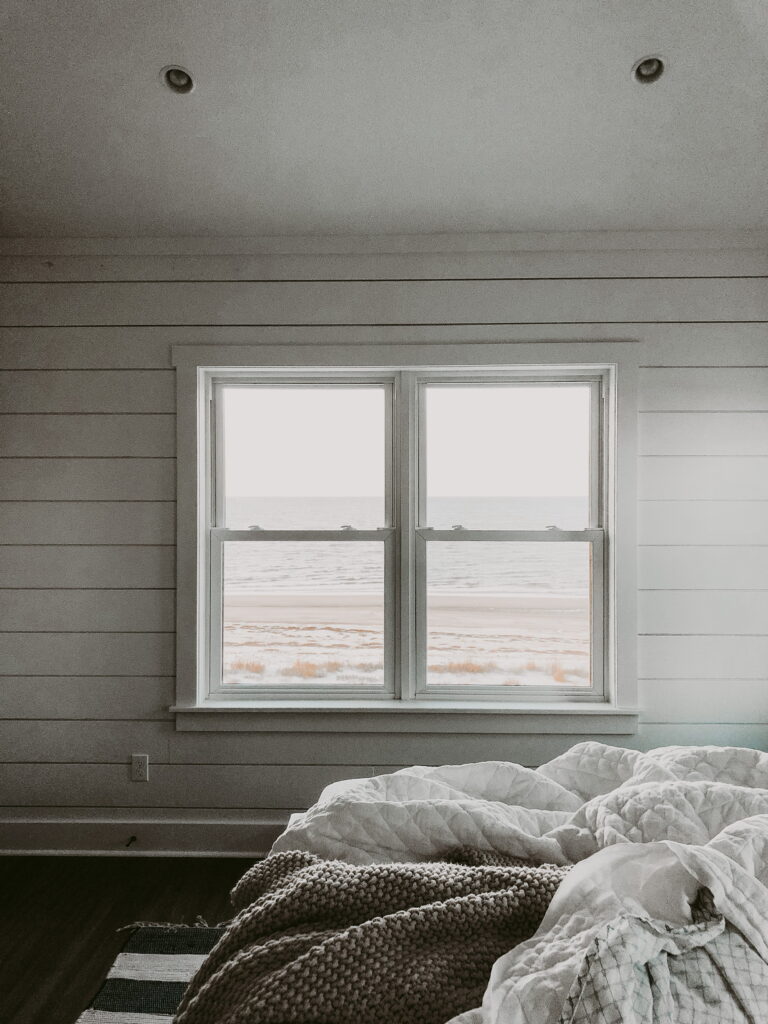

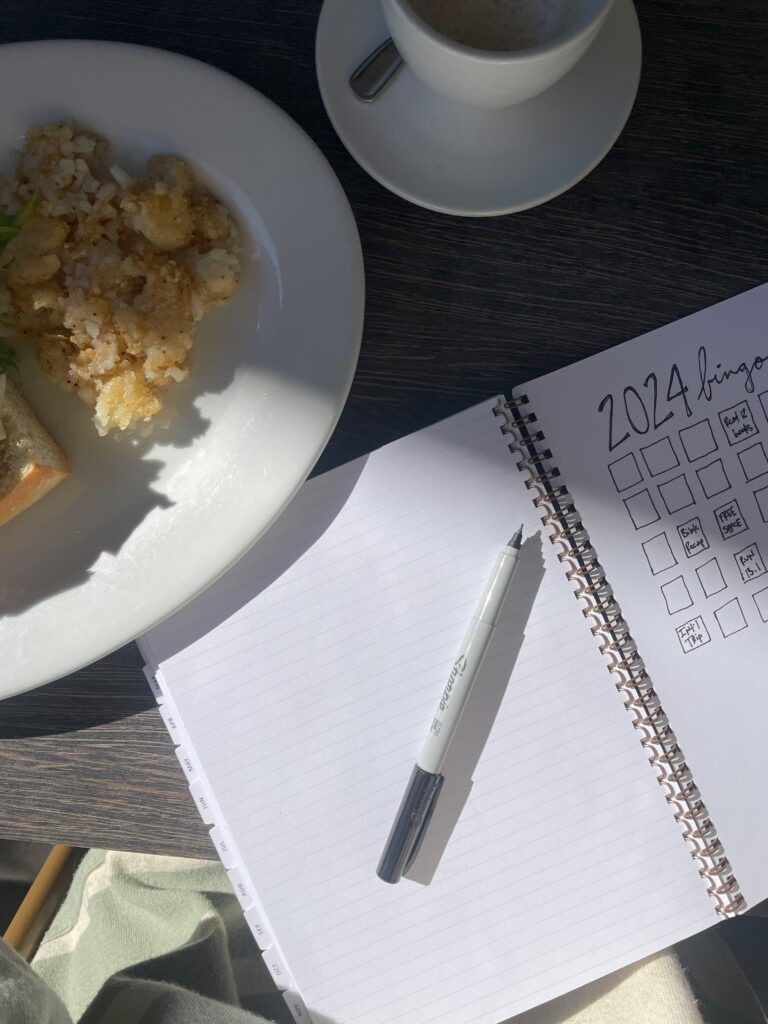
Caroline: These were the goals I was aiming for and although it was hard to stick to them perfectly, I did come out on the other end proud of how I executed my digital detox. I quickly learned as I brought these things back into my life, I not only wanted stricter boundaries, but I needed them. I loved who I was becoming in those 30 days. I got time back. I was productive in things I usually would have put off for days. I was able to stick to my rhythms and was healthier physically, mentally, and spiritually. I felt much more connected to myself, my family, and my friends (isn’t this ironic since I technically disconnected in so many ways?). I didn’t watch TV every night because it wasn’t right there in front of me to do so. I didn’t constantly pick up my phone because I would put it in the other room during my planned no phone time. And loud voices quieted.
AND I also really liked the idea of balance, because I do still enjoy technology. While I brought screens and media back into my day to day life, I knew I wanted to be more intentional with how I used them moving forward. I wanted to be realistic because they are a huge part of our society while also honoring what boundaries are healthy for me. Moving forward these are the boundaries I want to aim to keep in check:
- Charge my phone in the other room so I don’t endlessly scroll at bedtime or reach for my phone first thing in the morning (the exception– when I am on call for work). I will use these times to read, talk to my husband, or spend time praying/reading my Bible.
- Utilize the focus/do not disturb option on my iphone during my set times of no phone use, and I will try to keep my phone out of sight during these times if possible. I always ask myself, “are the memories my daughter has of me from today me interacting with her or me staring at my phone?”
- No phones at the dinner table.
- Check the data on my phone for how many times I pick up my phone daily and what apps I use the most and for how often. Pivot where needed and try to improve where I can.
- Set a time limit daily for FB/Instagram and honor that limit (Side note here: I really enjoy Instagram because it allows me to utilize parts of my creative brain. I love photography, I love to write, I love to share relatable thoughts, I love to connect with other women through shared experience that I otherwise wouldn’t be able to like my daughter’s clubfoot. These apps aren’t bad, I just want to be wise with them for my mental health, family time, and productivity, so I give myself the freedom to have them within the boundaries I’ve set.
- Limit watch time. We usually watch one movie as a family on the weekend. I also really enjoy a good show so I (or Nelson and I) watch an episode occasionally in the evenings. My goal with this is to have a cap time. We try to always head to our room by 9:30 so we can chat in bed or read to wind down before sleeping. As a general rule, our family tries to do things together that are more interactive like reading books, arts & crafts, going on walks and playing outside, going on adventures, etc. I have lots of thoughts on how we’ve done this with our daughter that will be shared in part two. Our big TV is actually still in our closet and we have a smaller TV in our guest room at the moment. Our digital detox was in February, and we’ve just opted to keep it this way for now. Not to say we won’t ever bring our big TV down to our living room, but one of the things we really enjoyed during the detox was having no form of entertainment in the main part of our home (living room/kitchen), encouraging us to naturally use that space to spend time together.
- In general, be with people more than I am consuming from a screen.
- Most of car time is conversation time. We do really enjoy music and good podcasts, Darcy included. Her favorite is “The Biggest Story” podcast and will always ask me to play it. We typically always talk about our day first and then if we have more time, I’ll play the podcast or we sing together.
Hannah: I was able to mostly stick to the goals I aimed for in the digital detox. I feel like in those 30 days I was able to get a 30,000 foot view of my habits and rhythms when it comes to how integrated technology is into my life. Things like not grabbing my phone first thing in the morning, not spending time scrolling without a goal, and filling my mind with what I knew was beneficial all made me feel so much healthier. I really liked who I was becoming in those 30 days. I was able to stick to my rhythms and was healthier physically, mentally, and spiritually. It was fascinating to see how in those in-between moments, I was swiping my home screen to find my Instagram app, only to remember it wasnt there. Instead, I pulled out a book. I read through so many books that month. I felt like I learned something new daily. I also feel like my creativity came back to life. I had spent so much time consuming other people’s ideas that I wasn’t as able to dig into my own ideas, I got to do that in this time off! I also found that my kids didn’t feel as though they had to compete for my attention. This reset allowed me to see that that was happening at times before this detox, and now I am able to have better boundaries to guard my relationship with them.
Similarly to Caroline, I enjoy technology. While I also brought screens and media back into my day to day life, I knew I wanted to be more intentional with how I use them moving forward also. I wanted it to be practical because they are a huge part of our society while also honoring what boundaries are healthy for me. Moving forward these are the boundaries I want to aim to keep in check:
- Not checking my phone before 9am. Instead, using that time to be fully present with my family before my husband leaves for work and the kids and I head out for whatever the day holds.
- I will continue to use Screen Time Limits for apps like Instagram that are my biggest distractors. My husband has the password to extend my time if ever needed, which has been a very helpful thing for me!
- No phones at the dinner table.
- Utilizing Do Not Disturb for time blocks consistently during the day.
- Check the data on my phone for how many times I pick up my phone daily and what apps I use the most and for how often. Pivot where needed and try to improve where I can.
- No TV for myself or the kids except on family movie nights, which usually end up being Friday, if we even do it!
- Most of car time is conversation time.
- Continue pursuing hobbies that are healthy for me. I want to focus on what I get to say “yes” to, not just what I want to say “not as much” to.

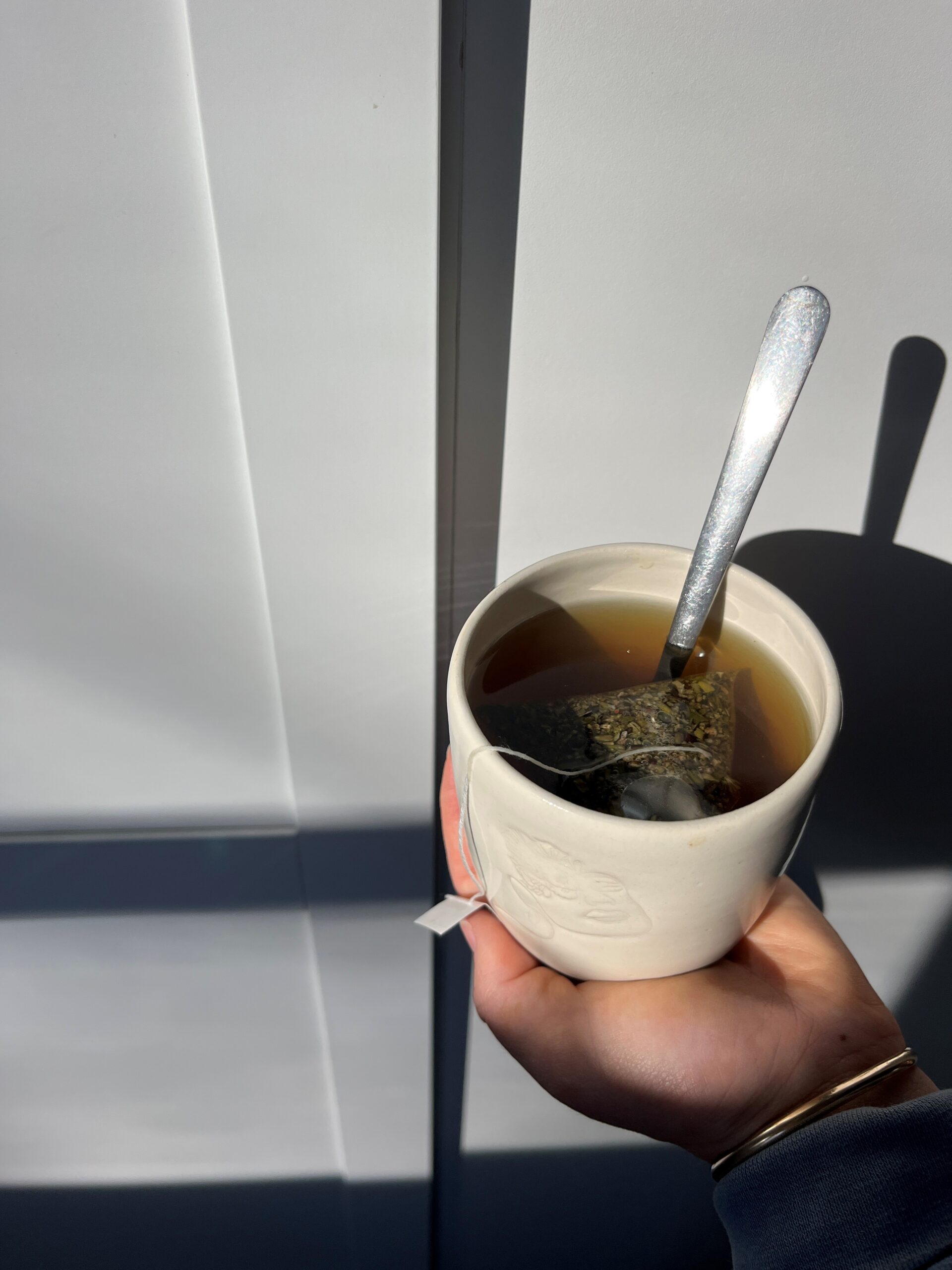
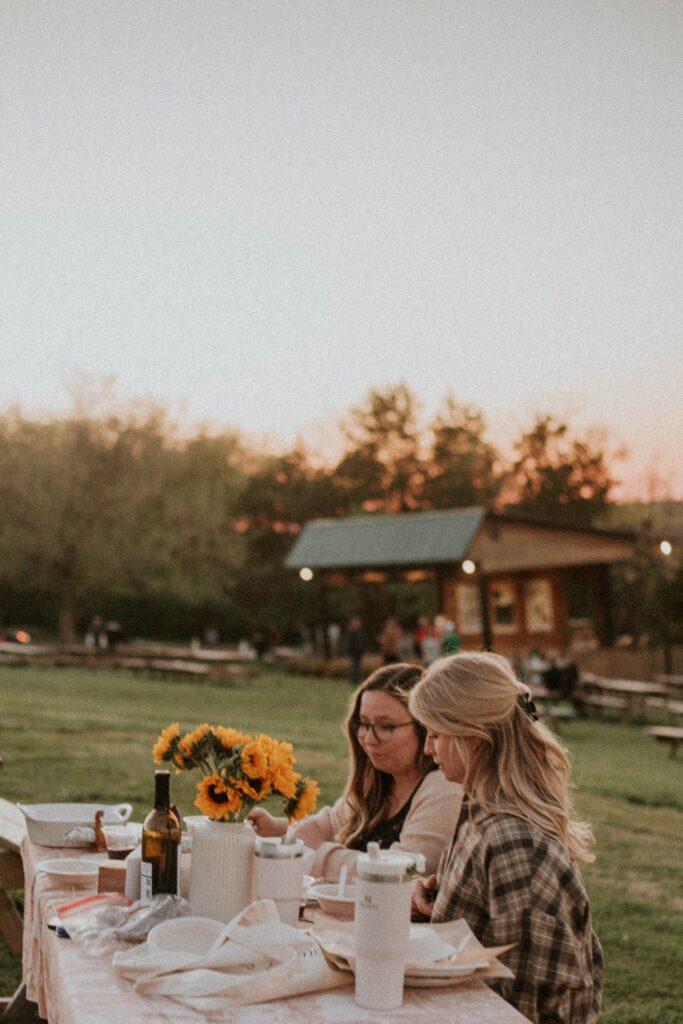

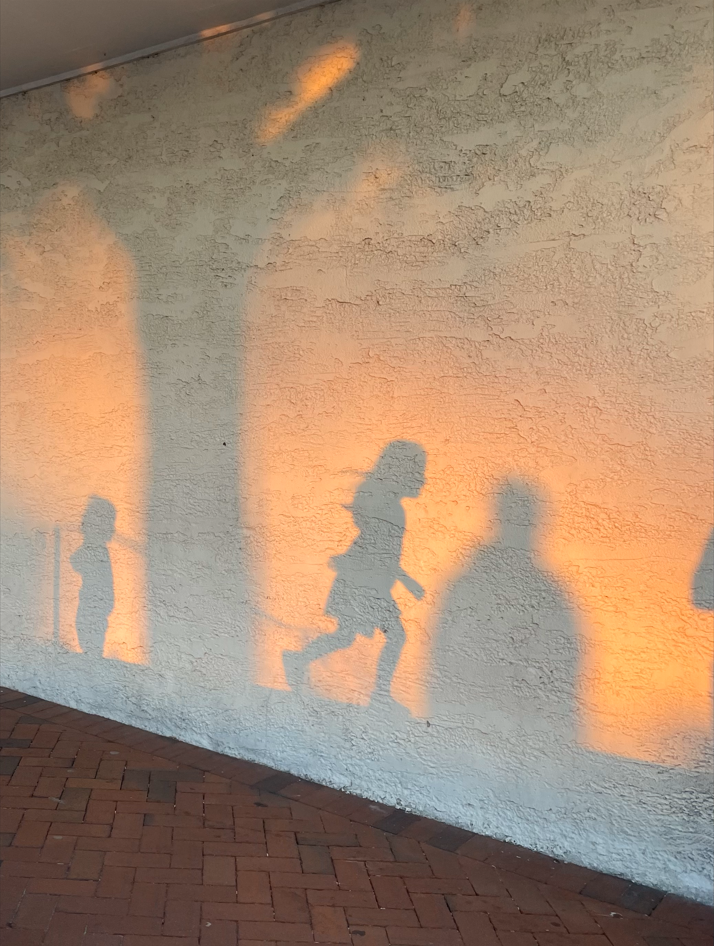

Caroline & Hannah: We don’t follow our digital boundaries perfectly, but we know they are the goal so we can always keep coming back to them and evaluating how it’s going. And it will take work and discipline, just like our marriages and parenting. There is also so much grace to keep learning and growing. During my digital reset, I (Caroline) read a book that was super helpful. I want to share a quote that I highlighted and will carry with me as I continue to implement these things and remind myself of why this is important. “The most powerful choices we will make in our lives are not about specific decisions but about patterns of life, the nudges and disciplines that will shape all our other choices. If we want a better life for ourselves and our families, we will have to choose it and the best way to choose it is to nudge and discipline ourselves to the kind of life we most deeply want.” – Andy Crouch in the Tech Wise Family. This is why we did this. This is why we encourage you to do this. Because it matters to ask yourself what kind of life we want, and if a screen is getting in the way of that, it’s time to evaluate and make the choices to change. This is not always fun, nor is it often easy, but it is always worth it.
We created a 30 day digital detox guide to help you have better boundaries with media/phone usage. In this guide, we give you thought provoking statistics, prompts to help you determine your why, tools to evaluate how media usage is going in your life, guided sheets to make your goals and set boundaries, a 30 day countdown for your detox, and weekly reflections to check in with yourself during it.
Our hope is that you come out on the other side less distracted and encouraged to use the tool of phones and media well!
Grab the Digital Detox Guide here!
